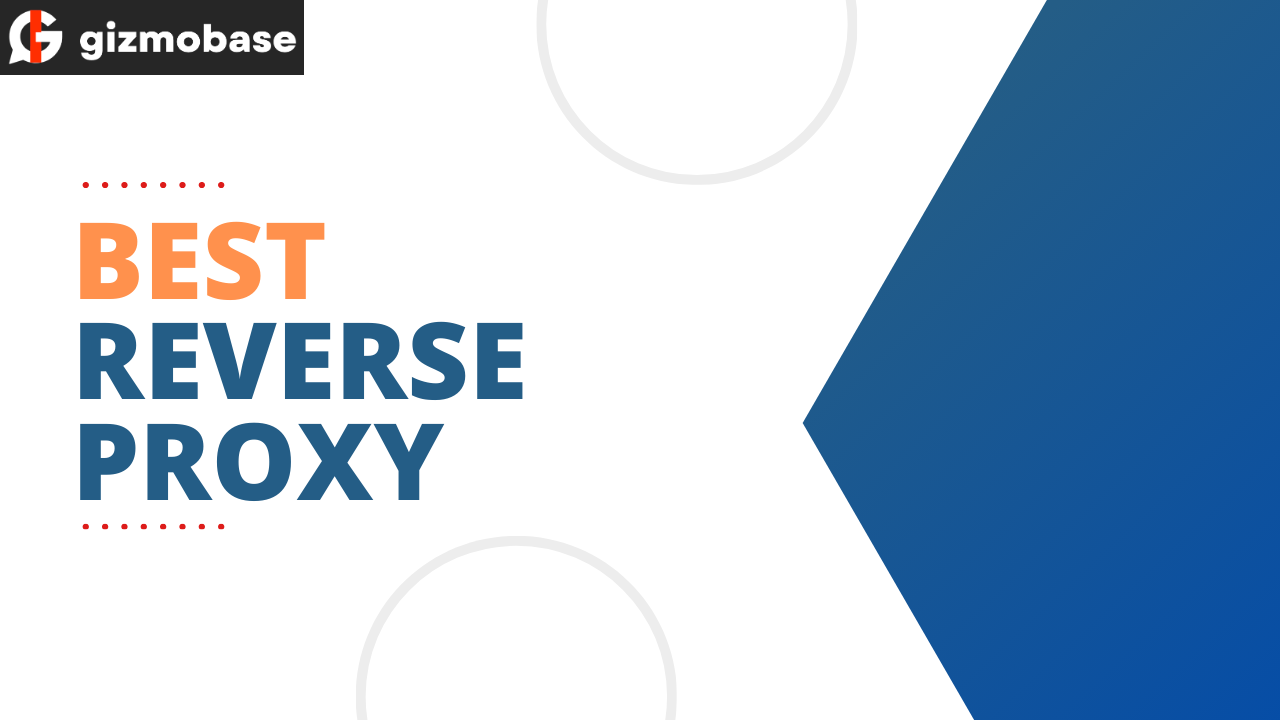10 Best Reverse Proxy Providers 2024
Take a look at the best 10 reverse proxy providers out there.
1. HashiCorp Consul
HashiCorp Consul is a powerful reverse proxy that gives you a way to connect and configure applications across a spread and dynamic infrastructure that is aware of the data center.
It is a great choice for Docker apps that need a reverse proxy. One of the best things about HashiCorp Consul is that it makes it easy and quick to see how your services are doing.
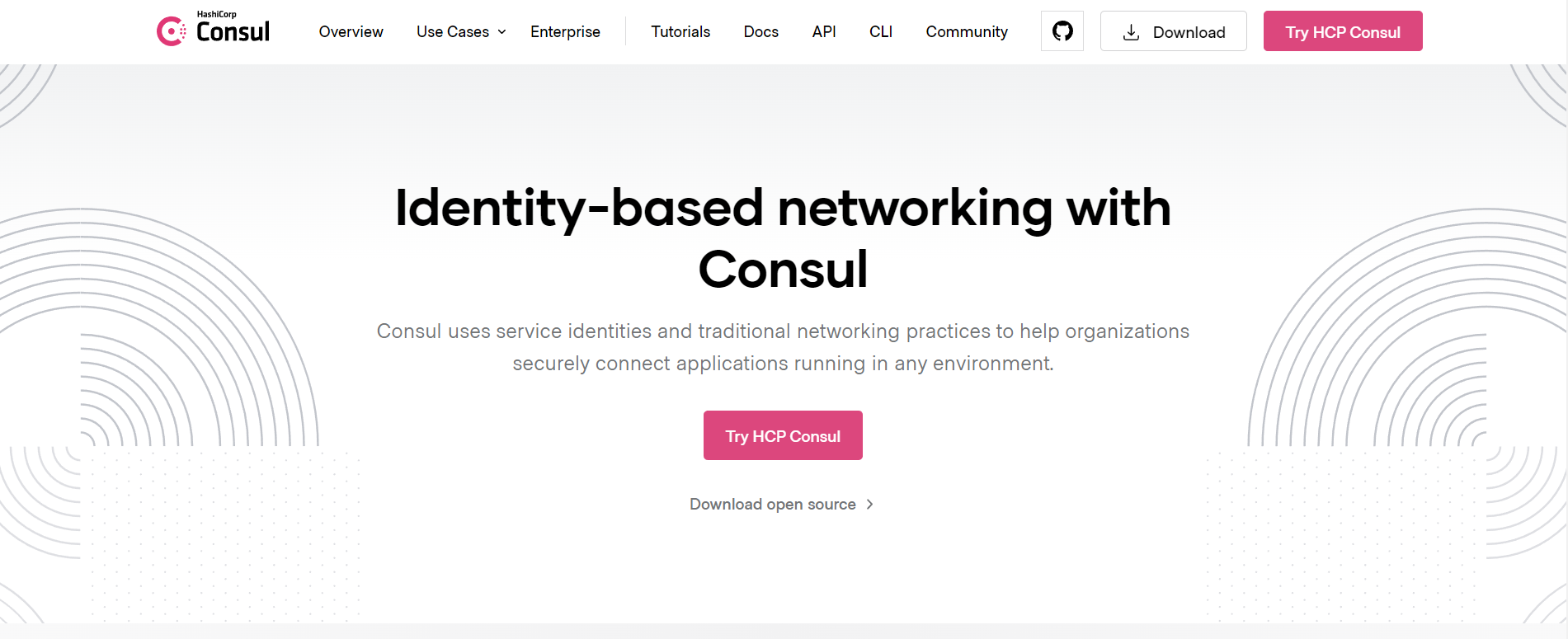
This is important because it lets users keep an eye on their services and deal with problems quickly. Consul also gives you easy-to-use APIs that let you automate jobs.
This can save a lot of time for people who have to do the same things over and over again.
HashiCorp Consul Features:
- Offers secure service-to-service communication.
- Monitors the health of services.
- Stores configuration data.
- Supports multiple data centers.
2. Apache Tomcat
Apache Tomcat is a famous open-source version of Java Server Pages (JSP), Java Servlet, Java WebSocket technologies, and the Java Expression language.
It is used a lot as a developed Java servlet wrapper that helps set up JSP and other Java business standards.
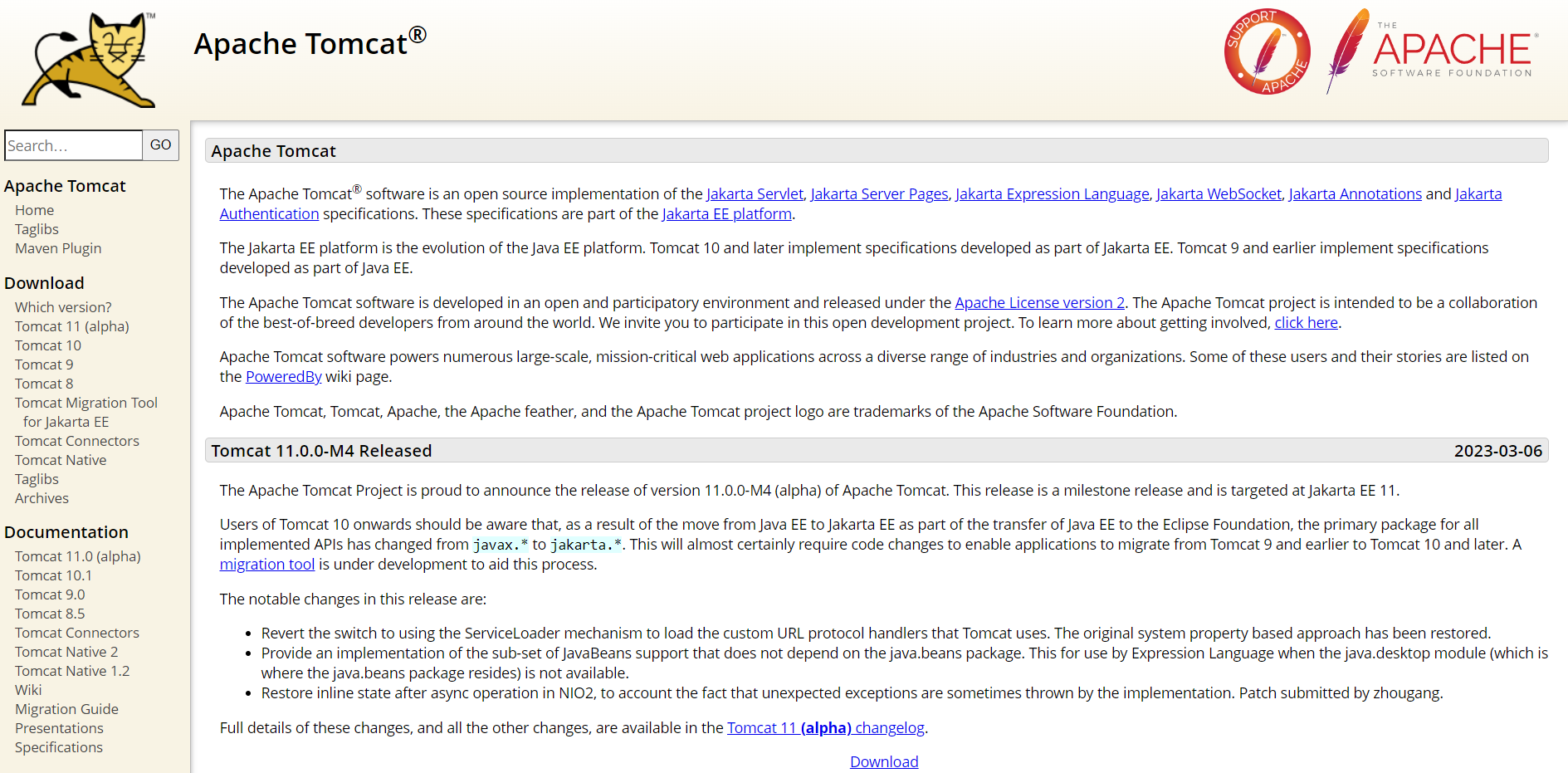
The fact that Apache Tomcat is free and open source is one of its best features. This means that anyone can use it without having to pay for a license.
Also, the software is updated regularly to fix any security holes that may appear. This makes sure that it is always safe and up-to-date.
Apache Tomcat Features:
- Scalable: Handles large numbers of connections.
- Administration Web GUI.
- Embeddable in other applications.
- Strong community support.
3. Microsoft IIS
Microsoft Internet Information Services (IIS) is a web server program that runs on the Windows operating system. Many websites use it.
It is a safe and flexible service that is used to run web apps and services. Microsoft IIS is different from other reverse proxies because server features are handled as separate points.

This makes it easy to add, remove, or change them as needed. One of the best things about Microsoft IIS is that it is very easy to add to.
It is easy to connect to other Microsoft tools like Microsoft Exchange Server and Microsoft SQL Server.
Also, Microsoft IIS uses all of ASP.NET’s power, which makes it a great choice for coders who like the .NET platform.
Microsoft IIS Features:
- Supports HTTP, HTTPS, FTP, FTPS, SMTP, and NNTP.
- Integration with Windows authentication.
- Scalable and extensible.
- Application pool isolation.
- IIS Manager for management.
4. Lighttpd
Lighttpd, also called “Lighty,” is web server software that is known for being flexible, fast, and safe.
It is made to handle a wide range of applications, websites that change often, and settings with few resources. One thing that makes Lighttpd stand out is that it can work with SCGI, FastCGI, and CGI.

This means that applications built in any computer language can be used with the server software.
One of Lighttpd’s best features is that it works with all computer languages. Lighttpd is different from other web server software in that it can work with almost any language.
The fact that the software is open source and free to use is also a plus.
So, users don’t have to pay a licensing fee to get the benefits of a server that is small, flexible, and easy to use.
Lighttpd Features:
- Lightweight and fast.
- Optimized for high-performance environments.
- Advanced feature set (FastCGI, SCGI, Auth, Output-Compression, URL-Rewriting).
- Low memory footprint.
- Security features like chroot support and Denial-of-Service mitigation.
5. Squid Proxy Server
Squid Proxy Server is an open-source caching server that works with protocols like FTP, HTTP, and HTTPS.
Saving and serving frequently asked web pages helps cut down on internet use and speed up response times.
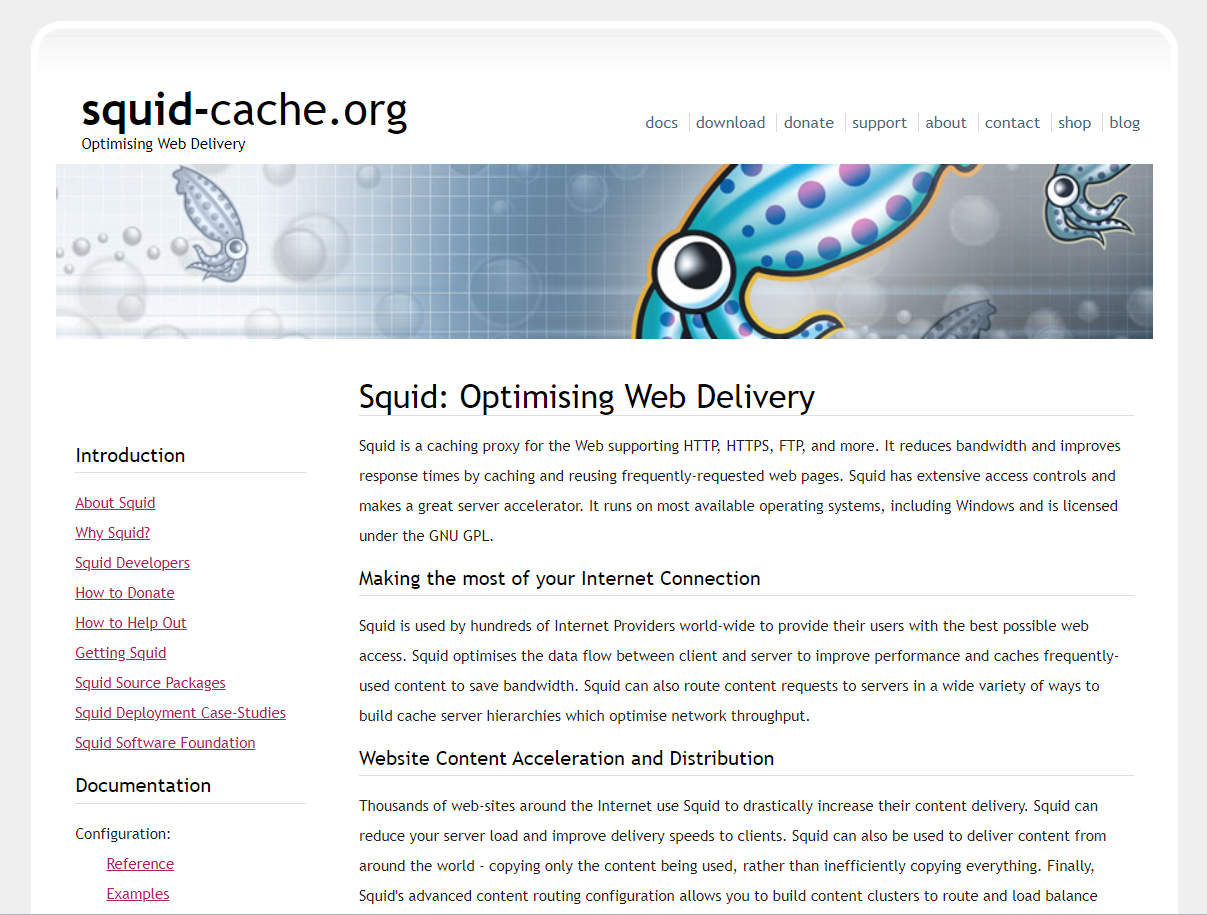
The Squid Proxy Server is a middleman proxy that works by saving requests for outgoing data that come in. This makes it a proxy cache.
It also has a reverse proxy mode that lets you control access, optimize data, and give permissions.
One of the best things about Squid Proxy Server is that it makes networks safer by providing SSL protection, access control, and permission.
It also sends requests to various origin sites and makes reports that can be used to plan resources, improve security, and make the system bigger.
Squid Proxy Server can also work well with a wide range of software from other companies, which makes it a good choice for many businesses.
Squid Proxy Server Features:
- Caching and forwarding HTTP web proxy.
- Reduces bandwidth and improves response times.
- Access control lists.
- SSL support.
- Logging and reporting capabilities.
You May Also Like This:
6. Apache HTTP Server
One of the most well-known web servers in the world is Apache HTTP Server. It is easy to set up as a reverse proxy, making it a great choice for companies.
One of the best things about Apache HTTP Server is that it often adds new security patches. Also, the software is free and open source, even for business users.
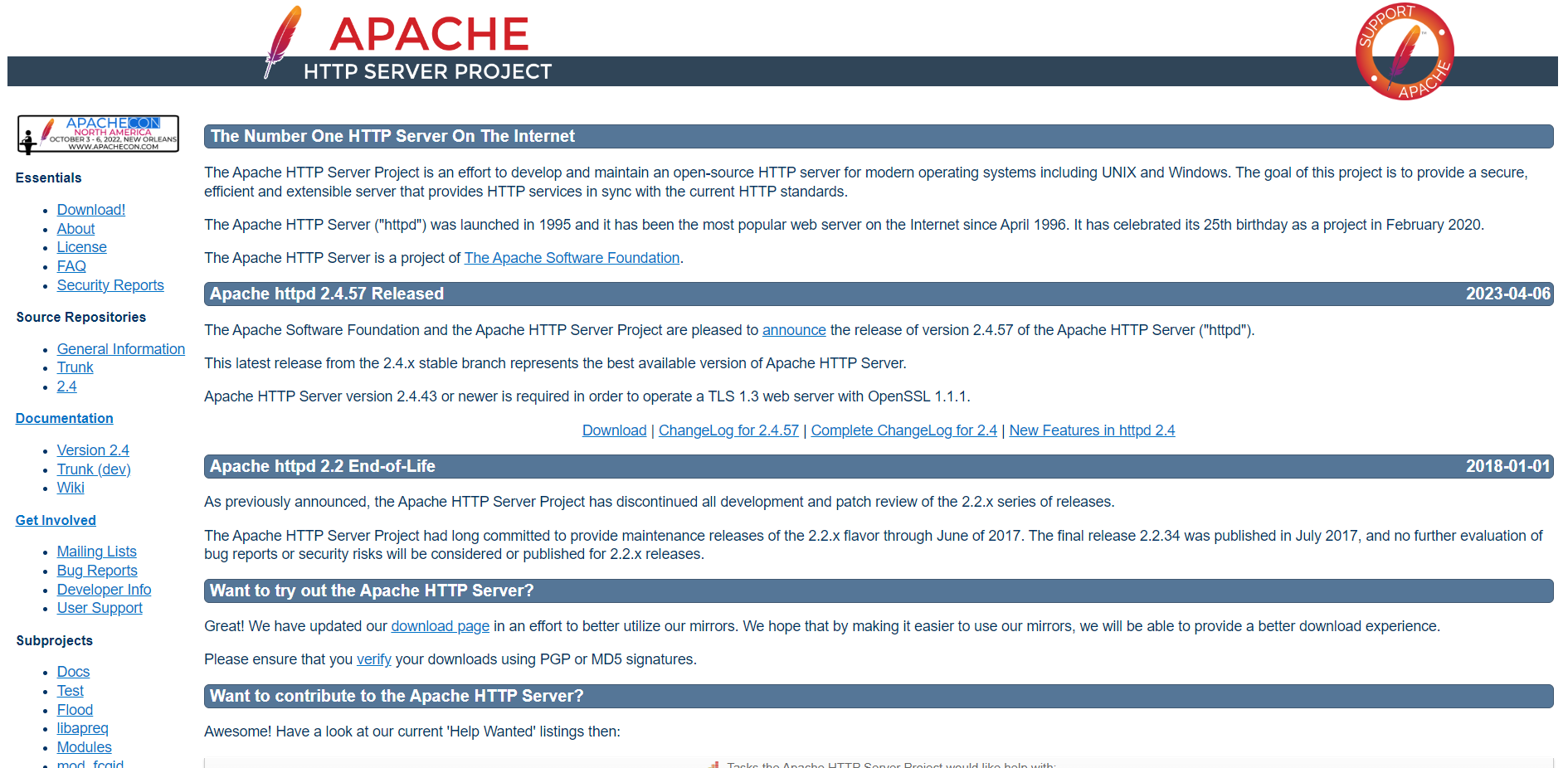
The modular design gives it more freedom and makes it easy for beginners to use. Apache HTTP Server works on both Windows and Unix computers, which means that it is cross-platform.
It also has a big group, which makes help easy to find. The server also works with WordPress sites right out of the box and works with all computer languages.
Apache HTTP Server Features:
- Modular architecture.
- Customizable with modules.
- .htaccess support for per-directory configuration.
- Secure (TLS/SSL) support.
- Strong access control and authentication features.
7. Traefik
Traefik is a high-performance HTTP reverse proxy and load balancer that is made to install microservices and comes with support for various load-balancing methods.
It is known for being able to work with many different companies. Traefik’s ability to automatically handle and dynamically change its settings is one of its best features.
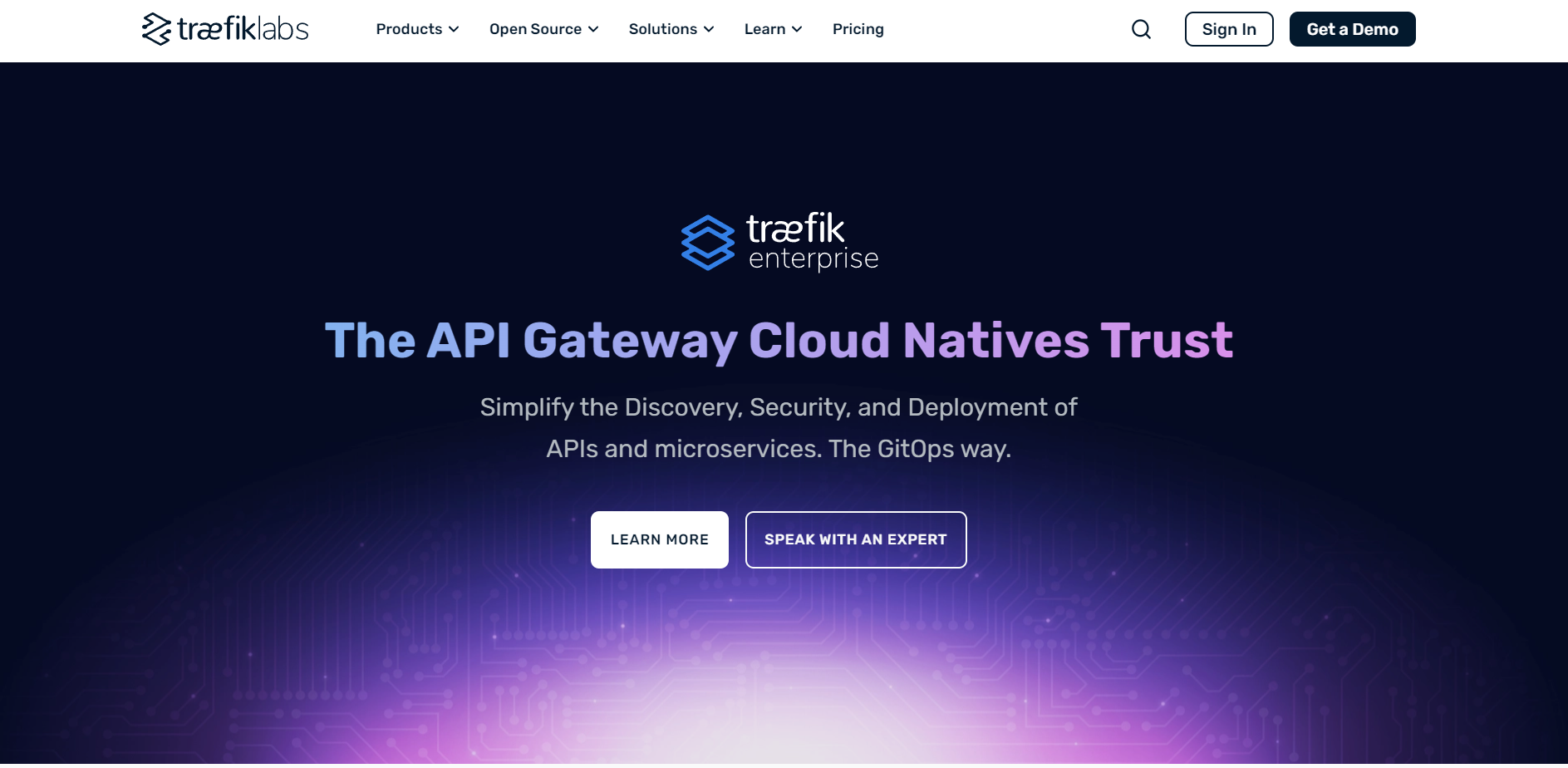
It does this by scanning the infrastructure for relevant information and figuring out which service answers the request from the outside.
One of the best things about Traefik is that it works well with Kubernetes. This makes it a great choice for companies that use Kubernetes to handle their containerized processes.
Users who know how to use Kubernetes and container management will find it easy to use Traefik because it has a clean and simple user interface.
Traefik Features:
- Reverse proxy and load balancer.
- Automatic HTTPS with Let’s Encrypt.
- Integrates with Docker, Kubernetes, and other orchestration tools.
- Dynamic configuration and service discovery.
- Middleware for enhancing requests.
8. Varnish HTTP Cache
Varnish HTTP Cache is a caching reverse proxy that is free and open source. It also speeds up web applications. It works by saving information on the computer to make web apps run faster.
Varnish is usually put between a client and an HTTP web server or program. When a client asks a web server for resources or information, Varnish makes a copy of the information and stores it in a cache.
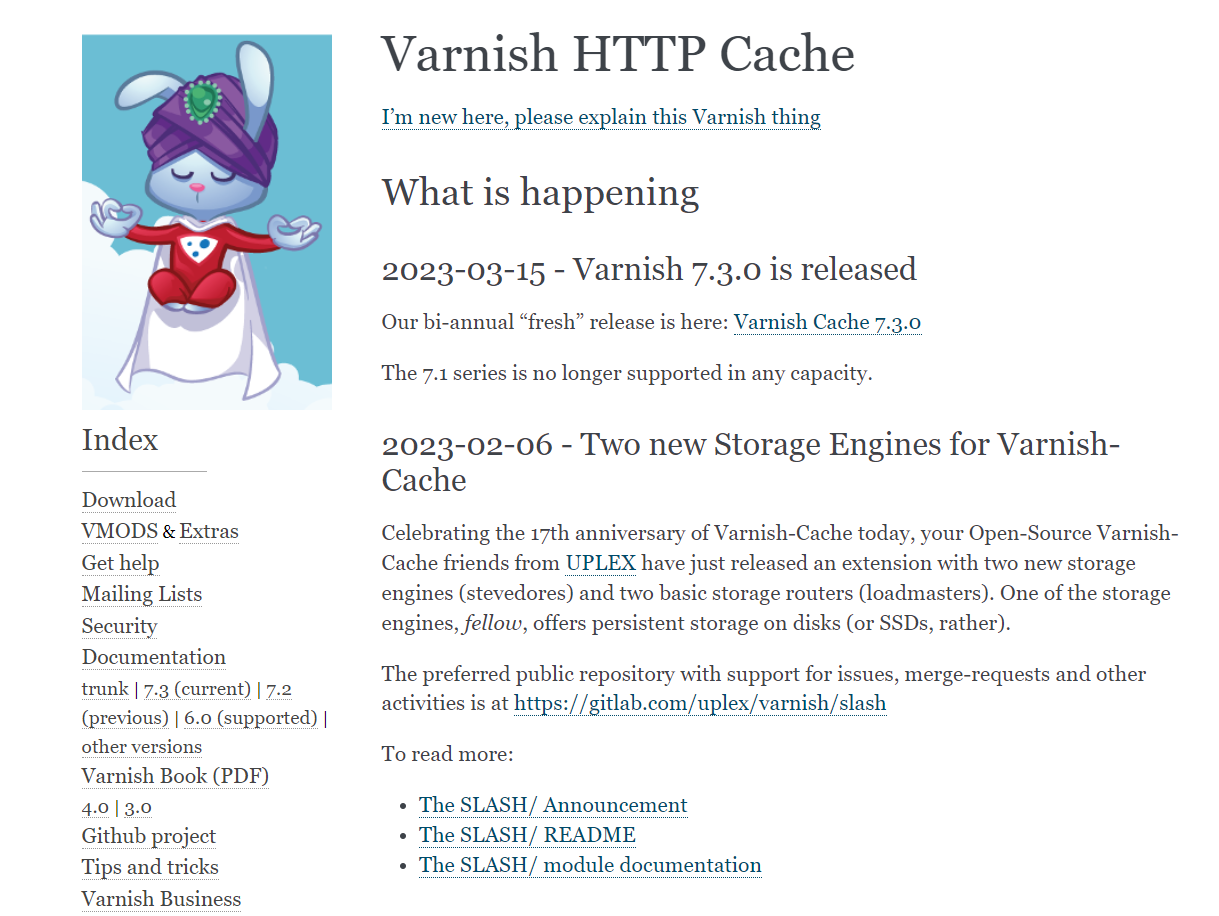
Varnish setup Language (VCL) is a flexible setup language that lets system managers set up how new requests are handled, what content is given, and how the requests and replies are changed.
Varnish can be made to do more by adding Varnish Modules (VMODs). Users can write their modules or use modules made by the community.
Varnish HTTP Cache Features:
- High-performance content caching.
- Reverse HTTP proxy.
- Load balancing capabilities.
- VCL (Varnish Configuration Language) for configuration.
- Graceful handling of server backend failures.
9. NGINX
NGINX is a famous, free, open-source server and reverse proxy that stands out because it is stable, fast, uses few resources, and has a lot of features.
Like HAProxy, NGINX is powered by an event-driven design. This means that it can handle thousands of connections at the same time.
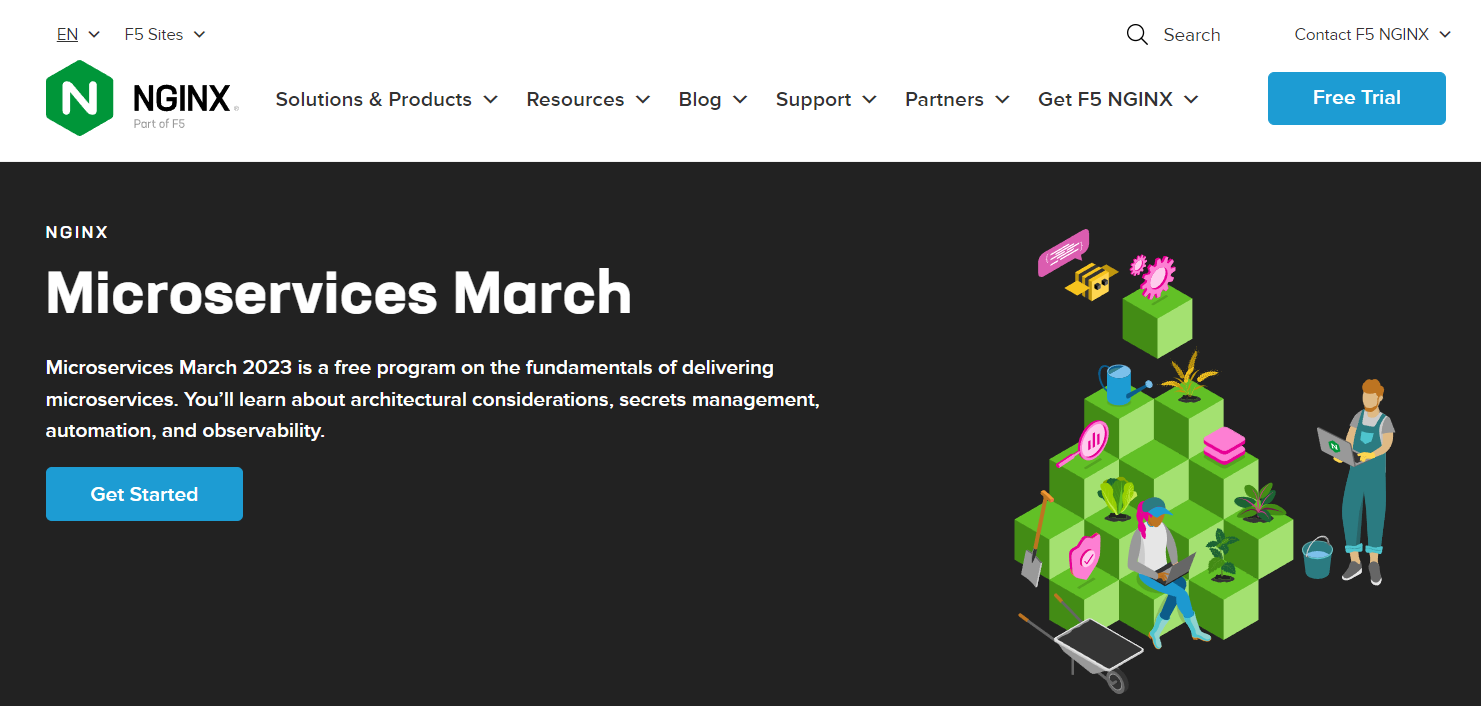
Also, NGINX is known for being able to handle errors and spread out the load, which are very important for large-scale computing systems.
The ngx_http_upstream_module lets you set up groups of background servers to handle requests from clients.
This makes applications more stable, available, and strong. NGINX also works with security tools like SSL/TLS termination.
NGINX Features:
- High performance, low resource usage.
- Reverse proxy with caching.
- Load balancing and fault tolerance.
- Support for FastCGI and other protocols.
- Modular event-driven architecture.
10. HAProxy
HAProxy is a well-known, free, open-source reverse proxy that can do a lot of different things. It is known for being stable, running well, and using few resources.
It works as a TCP proxy and normalizer; an HTTP reverses proxy, an HTTP compression offloader, and a content-based switch. HAProxy gives you low delay and safety from DDoS threats.
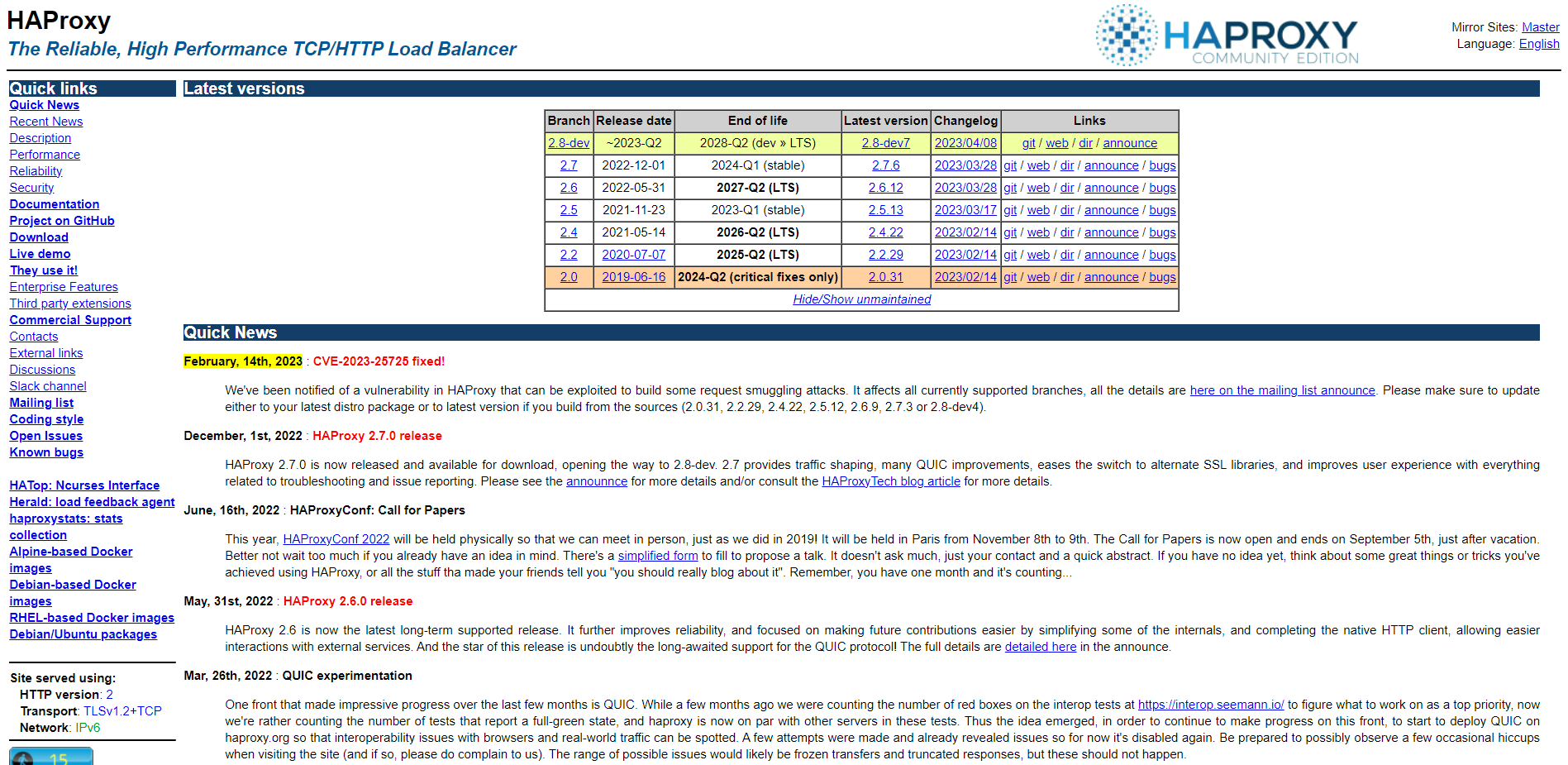
Load sharing is one of the most important things that HAProxy can do. HAProxy is known for its fast load balancing speeds and its ability to handle multiple network parts and virtual hosting at both layers 4 and 7.
HAProxy also works with cookies and keeps track of sessions, which is important for keeping the user experience.
HAProxy Features:
- Compatibility with the latest HTTP/2 protocol for improved performance.
- Provides failover and load balancing to ensure continuous availability.
- Reduces data size for faster transmission.
- Regularly checks the health of backend servers to ensure traffic is only sent to operational servers.
Quick Links:
Conclusion: Best Reverse Proxy Providers 2024
When it comes to choosing the best reverse proxy provider for your organization, there are many factors to consider.
From performance and stability to security and ease of use, each provider offers unique advantages and disadvantages.
It’s important to carefully evaluate your needs and requirements before making a decision.
Whether you choose NGINX, HAProxy, Apache, or another provider, a reverse proxy can help you improve the performance and scalability of your web applications while also enhancing security and reliability.
By balancing traffic across multiple servers and handling complex protocols, a reverse proxy can ensure that your users always have fast, reliable access to your applications.
With the information and insights provided in this article, you should now have a better understanding of the top reverse proxy providers on the market and what they have to offer.
Use this knowledge to make an informed decision and choose the provider that’s best suited for your organization’s needs.
